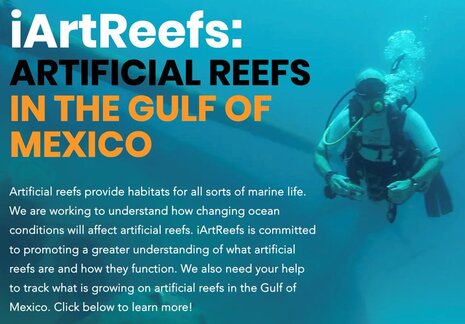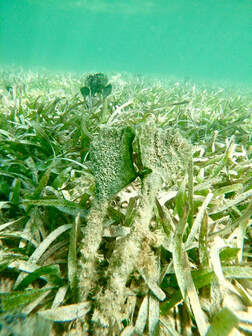BENTHIC ECOLOGY
Our research focuses on plants and animals that live on the seafloor in shallow-waters and how the environment shapes their interactions and physiology. This research is often done in the framework of how humans modify coastal ecosystems and how best to manage them. Our current research (outlined below) is focused on: 1) how human-made structures shape the ecology of the northern Gulf of Mexico, and 2) the effects of global environmental change on seagrass bed and artificial reef ecosystems.
Artificial reef ecology
Artificial reefs are human-made structures often placed in the ocean to increase fishing opportunities and promote sea life. In the Northern Gulf of Mexico the seafloor is mostly composed of soft sediments. Therefore, artificial surfaces create habitat for invertebrate (e.g. barnacles, crabs, anemones) and algae that otherwise may not be there. Our research questions focus on describing primary production on and surrounding reefs and the link to fish production. Invertebrates are important for trophic transfer of this energy to fishes. Thus, we are also keenly interested in their physiology-ecology under ocean warming and acidification. Because reefs could be stepping-stones for species range expansions into warming waters, we also seek to describe the role of reefs in the maintenance and spread of nuisance and vulnerable species.
Check out a video on our research below.
Check out a video on our research below.
|
Want to get involved in this research or learn more about ocean acidification and artificial reefs? Visit iArtReefs, a student-led project aiming to understand how OA and warming will affect artificial reefs in the Gulf of Mexico. More here: https://iartreefs.wixsite.com/home |

